Hi Dave, how are things?
Good, just in Sydney, Australia at the moment. My wife, son and I had to come back to renew our work visas. Actually, about 5 minutes ago the courier dropped by with our passports with the visas.
Happy days.
Yeah, we’re good to go for another couple of years.
Oliver mentioned the pain of having to return to an embassy.
That’s right. You have to go a US consulate outside of the United States to actually get a visa in your passport. You can’t do it in the US. The reason we had to do it right now is because Transworld was just bought out by a company that owns Skateboarder magazine. My visa wasn’t due to expire but because it was basically a new employer, I had to get a new visa. My wife is dependent on it. My son is only 5 months old and is actually a US citizen but I couldn’t leave him behind [laughs]. So we all had to come back.
Congratulations on becoming a father.
Thanks.
What’s his name?
Weston.
Great news. Let’s begin with the usual: where you are from, what was your life growing up like and how did you first get into skating?
I’m from a small town called Pukekohe in the North Island of New Zealand, I grew up playing rugby and being outside most of the time as kiwi kids typically do, I began skating in 1990 when a guy who skated moved to my area and we became friends. He would let me cruise around on his Tony Hawk claw board and as soon as I saw him do a boardslide I was hooked.
What was the skating scene like in Pukekohe?
There was almost no scene; there were about 5 of us who skated. Auckland is 40 minutes drive or an hour and a half on the bus away so that’s where we went to skate. Andrew Morrison – an ex New Deal pro – worked at Cheapskates in Auckland and would show us all the new videos and if we were lucky we’d get to watch him shred the vert ramp at the indoor park down the street. The scene in Auckland is still very strong and there are great magazines, companies, shops, skaters, filmers, and photographers coming out of New Zealand. There are still probably only 5 dudes who skate in Pukekohe though.
How long were you skating for before photography came into the picture?
I didn’t start shooting skate photos until I was 26, I was working as a clapper/loader on TV commercials and movies in New Zealand and didn’t have enough time to skate so I chucked it in and moved to Tokyo for a year. I taught English and got really into photography there, I actually had my first photo published in a Japanese magazine.
Was getting into photography related to skateboarding or did photography bring you back to skating?
I never stopped skating just working the film job was really annoying because it didn’t leave me much time to skate. I remember working on a movie for two and a half months where we did 16-hour days 6 days a week, that doesn’t leave much time to shred. It was a BBC TV Movie of Sir Arthur Consnn Doyle’s “The Lost World.” It’s set in the Amazon but was filmed all along the west coast of the South Island of New Zealand. Bob Hoskins was in it. He was really cool. But giving up that career and moving to Japan was really the catalyst because it gave me a lot more time to skate again and to learn photography, buying equipment and processing film was a lot cheaper there too When I started shooting skate photos I just applied everything I’d learned in film school to photography but I was definitely a skater first. After a year in Japan I moved to Australia and kept shooting like crazy, I was living off the bones of my arse in this cockroach infested halfway house for a while, but I didn’t give a fuck cause I was so stoked on shooting photos and getting them published.
What was the photo you got published in the Japanese magazine?
I had a friend – Simon Lockett – who’s also from New Zealand but he met a Japanese girl in Australia 18 years ago and then followed her to Japan. He used to ride for Capital; you know that old Andy Stone company from the States. He rode for them and had ads and stuff. But he was living in Japan the whole time. He’s kind of a legendary dude in Japan because he’s this white guy who showed up and was ripping. He stayed and still lives there now. It was a photo of him.
What was it of?
I think it was it was this weird – Japan has a massive magazine culture – fashion magazine that come out every month or every week or something and for some reason they would always have a skateboarding spread in the middle. I think it was a sequence of him 360 flipping a gap or a bump or a something as well as an ollie photo, which was a still.
What was it like living there?
It was really cool. It was kind of where I got into shooting photos. I had a Japanese roommate in New Zealand. He was there for a year and we became really good friends. Then he went back to Japan and he was always asking me to come. I had this other friend in New Zealand who I skated with and he went to Japan and taught English there for a year. Basically he got a work visa for a year. My friend Steve had gone there and was about to leave as his year was up. He knew I was interested in going there and contacted me and said, “hey I’ve got this job that you can work for 3 hours on a Saturday evening and you’ll make enough money from teaching for those 3 hours to pay the rent on my apartment. I’ll just pass it onto you. You’ll figure the rest out.” So I just went for it. I was kind of bored in New Zealand. Simon and this other dude Jeremy who were over there at the same time, I was skating with them. I was starting to shoot photos a little bit and then once I was there I ended with this really good work schedule where I would teach from 10 until 12 in the morning and then go and skate all day and then teach from 7 until 9 at night. So I just photos of my friends and some of the Japanese guys. That’s where I got into it. I went back to New Zealand for a little bit then went to Australia shortly afterwards.
What was your first cover?
Tommy Fynn Nosegrind for Australian Skateboarding Magazine. I shot it on a trip back home to New Zealand on the one day he and I were both in Auckland, I remember he did three really gnarly tricks that day and the nosegrind was one of them. He and his whole family relocated to Australia pretty soon afterwards
Give us a run down of your equipment choices and the reason for your choices.
I have Nikon digital cameras; a D800e and a D3, I really just shoot Nikon because I started out shooting Nikon 35mm so I already had a lot of lenses. I have a Hasselblad 2000FCW, it’s the body that has a focal plane shutter in the back of the camera so you can shoot up to 1/2000 sec natural light photos. I also have a Hasselblad XPAN, which shoots 35mm panoramic photos, a NikonF5 and FM2 and a Zeiss Ikonta, which shoots 6×9 medium format. I have Lumedyne action packs and Nikon speedlights, pocket wizard radio slaves. Equipment has changed all for the better I think, with digital everything is a lot easier and less expensive plus you don’t need as much gear. The negative is probably the time you have to spend in postproduction. In the future you will be able to take a photo when you blink, Photoshop it by thought and upload it to the Internet telepathically [laughs].
What was film school like?
It was really cool. It was a really practical course where you made a lot of stuff: documentaries, dramas. I think in our third year everyone had to make a short film but we’d basically crew each others films; you’d be directing your own but shooting or lighting on others. It was really cool. I was shooting a lot of 16mm and stuff too. I was shooting film on film – not just videotape. When I started shooting photos a lot more, I already knew about film speeds, shutter speeds and all that kind of stuff. Actually after I finished film school I went and worked for this movie rental company called Panovision. It’s actually an American company but they have branches all over the world, but I worked as a technician; putting camera equipment together that was being used for commercials, movies or stuff like that. I moved on from there to being an assistant. So the technical side of photography I already knew from that.
Is that rare with skating photography?
Maybe but I don’t really follow the filming or video side. I used to do that when I was younger but I haven’t in years. I have a digital camera now that you can film HD on and I occasionally film something with it but not that often. But then my wife makes a lot of documentary stuff. She does motion graphics. She’s done a lot of work in skating as well; sometimes I help her out too.
That’s cool. What sort of work has she done?
She’s done tons of stuff. She did this Kickstarter type thing last year. It’s called “Work in Skateboarding”. She started this website and it’s kind of like an educational tool basically to show people the job opportunities in skating outside of being a professional. She’s working on stuff with filmers, shoe designers, team managers and all those kind of behind the scenes roles. She was doing this web series, which was a page in Transworld, and there was a video to do with every month. It was called “Off the Board.” It was stuff that skaters did outside of skating. There were a lot of those videos, which showed Eric Dressen tattooing and Matt Rodriguez playing in his band, Nestor Judkins’ photography, Josh Harmony, Jason Adams. She did motion graphics stuff for LRG commercials. She did the Lucas Puig Adidas video with the road trip around France, all the animation stuff for that; hand -drawn, old school French road maps and stuff.
That’s cool the way you can help each other out.
Yeah, it kind of came from us moving to the States in Oakland and the San Francisco Bay area. She already had a background in doing that. She’s worked on movies and stuff before. It was really hard for her to find work up there. There’s not much of a film industry. She started doing skating stuff to help me out and the Transworld site and it snowballed from there.
So how did Transworld start up for you?
I guess originally I was in Australia shooting a lot of the Aussie guys. It was through [Mike] O’ Meally because he would come back to Australia most summers and I met him and he just saw stuff I was shooting in the Australian mags and was super encouraging. I think he was like, “hey you should submit some stuff to the US mags” and I was already sort of trying to do that. There was this period where I was contributing stuff to the Skateboard Mag and Skateboarder, Slap and Transworld. Whatever I could, whoever would run something basically. I met Skin [Phillips] when he came out here one time and I started sending him stuff; he was really receptive. He started sending me on some trips. I got sent on a Krux trip to China and Mike ended up getting double booked in Australia and he called me. He was like, “can you look after the Lakai team for a week? Take them around Sydney and Canberra” and I was like “yeah, that sounds amazing.” This when [Guy] Mariano had really just starting getting photos again. I was like “who’s coming?” and he was like, “yeah, It’s Mariano, Marc Johnson, Eric Koston, Alex Olson, Brandon Biebel, Rick Howard, Mike Carroll.” I couldn’t talk, I was at this cafe with my wife and I couldn’t speak [laughs]. That ended up being really good because I ended up with all these photos of those guys from that week or whatever and if you have a photo of those guys it’s going somewhere you know? It’s not going to sit around. And then from there we moved to Europe. I was nearly 30. You can get that 2-year work visa if you’re part of the commonwealth to go and work in England. If you have that you can travel freely in Europe at the same time but you can only get it up until you’re 30 years old. My wife Sam said, “you know we should do this because you’re going to be too old.” She’d lived in Europe when she was a teenager; she lived in Holland on a student exchange and travelled around a lot. I was pretty happy in Australia but thought, “fuck it, let’s do it.” We spent a summer in Barcelona and then went to England with the idea of staying there. We got there in September and it just started fuckin’ raining. We stayed there for 3 months and I probably shot 10 photos if I was lucky that whole time. I did some trips from there but was just like, “I can’t stay here. This isn’t going to work” [laughs]. It seemed covered already with guys like Sam [Ashley]. I liked skating there but the weather was so brutal. I came to the states for the first time but Sam stayed and worked on a movie. It was one with Jason Stratham. I travelled around about a bit. We did another summer in Barcelona and that’s when the Lakai guys were coming out there and I was skating with them. Oliver was so busy that he had other stuff that I could be doing. Being in Barcelona at that time, you could go to MACBA and there would be 5 pros from the States skating around and they wouldn’t have photographer with them; I shot a whole Chico Brenes interview out there because he was out by himself.
What does your job involve apart from shooting photos?
It’s just filling all the holes basically. I think the hardest thing to get done for a magazine is all the columns. Those single pages, the portraits, the top fives. Just collating all that stuff. A lot of it is organizing trips with companies, interviews and stuff for the website as that is such a big focus right now. A lot of it is lining stuff up with people too. I think people have this idea that as a photographer you just get sent on these trips. That does happen sometimes but a lot of the time it’s the photographers who line that stuff up. A lot of photographers have relationships with different companies. Obviously Oliver is going to shoot all the Etnies trips, I have relationships with the different LRG dudes so have shot the last 5 LRG trips that have been in Transworld. You get into a groove with people. I’m the only one up north so they’ll be like, “Dave can you get us a photo of [Dennis] Busenitz.” In the office, if they need something I’ll just always try to get it as well as always having a couple of interviews that I’m working on.
How do you compare videography to photography in terms of difficulty when it comes to documenting skateboarding?
It’s just as difficult. I thick the equipment is far more advanced than a still camera. I think where an older video camera was pretty easy to use and there wasn’t too much you could do as far as settings or adjustments, now there are far more with that. The people that use them have to know what they’re doing.
Does that extend to appreciation?
I definitely lean towards photography more but I’m always out with guys who are filming. Because we work so closely I’m always interested in what they’re doing, asking questions. We always talk about equipment because it’s so similar. We kind of pick up things from each other I guess.
Let’s hear the influences.
As a kid looking at the skate mags I wasn’t as aware of the photographers but I became more aware as I became interested in photography. I started skating in 1990. In New Zealand you could only really get Transworld, you would occasionally see some Thrashers. I came from a really small town too; the bookshop would sometimes get those. I would grab whatever I could. The early stuff in Transworld and the Spike Jonze stuff really stood out. Even looking back at that stuff now I think it’s really amazing. Once I really started shooting I analyzed the shit out of everything, the whole period where Atiba [Jefferson] started using a Hassleblad and his stuff really stood out. O’ Meally’s stuff when he worked for Slap. One of my favorite periods and an example of when a magazine was working at it’s best was when Oliver, Mike and Aaron Meza were at Skateboarder; they had cool simple ideas, the layouts were good, the ideas were good. Those two have sort of a healthy competition going on between them too. They’re both really good photographers and have both worked for the same magazine for a really long time. They push each other. That period was awesome, and it was when I was really getting into photography. I had bought a medium format camera; I had so many boxes and never missed an issue of Skateboarder even though I didn’t have a subscription. I probably sound like a dick here because both of them work for Transworld too but they’re both pretty influential. Mike has that documentary style and he’ll always come away with some amazing photo. Oliver just nails that really perfect studio lighting in the street where it’s impossible to get that kind of stuff and he’s still shooting it all on film so it takes longer and it’s less easy to see mistakes straight away and correct them whereas it’s really obvious on digital. Those guys nail it. But there are new guys; I actually really like Matt Price’s photography. He does really cool lighting. Joe Brook is pretty influential. I love [Gabe] Morford’s early San Francisco stuff. It’s funny when you look at Koolmoleo who reposts photos from skate mags on Instagram. It’s always Morford photos from San Fran it the heyday. It’s so fuckin’ epic. I keep telling Morford that he’s got to make a book.
Having mentioned the time spent by Oliver, is there a lack of appreciation for that?
I just mean to set up a photo on Hassleblad, on film, just takes longer. The result is totally worth it. His stuff is totally awesome. It’s cool that he’s still shooting that. It’s nice because when everyone’s shooting with the same equipment, everything gets a bit the same. That’s the main thing I dislike about digital photography. With film there are different format options, with different cameras you get differently shaped photos or different sync speeds. There is so much weird equipment to look back on, as it’s evolved and do weird shit with. A digital file that is cropped isn’t the same [laughs]. It doesn’t have the same mystique. I don’t know if people appreciate it or not. I know I do. I think people appreciate when things are done a little bit differently. People do notice. Sometimes I see stuff that’s done differently which I don’t think is that good just because people are all psyched on it because it’s different.
Are there favorite photos as well as photographers?
I really should have mentioned Brian Gaberman there. His dark room stuff is obviously insane. I think we’re lucky to have him in skateboarding. The amount of time he puts into it, he was printing in color, which is really difficult. He would have been doing some much work and so much time in the dark room. He does it digitally now but he did that all on film. It’s pretty crazy for something that turns around as fast as skating, monthly magazines. The Hensely ollie on the hat. There are tons of other photos that are amazing but just that photo and the caption, it’s just the sickest thing ever. It’s so long ago that came out. Maybe it was 1992. Maybe it was because I just started skating, the spot was insane, it was your favorite dude shot by the best photographer at the time. It’s black and white, which for some reason always seems more classic. It’s not lit, it’s well framed: “[they] drove up to Seattle, got kicked out of this spot in 10 minutes, and drove straight back. Hi.” [Laughs] I was talking to Oliver about this: you remember photos but it’s very rare to remember any writing in skating.
What’s your personal work ethic in that respect of what you said about Gaberman? Are you very motivated?
I think so. I definitely like to be doing stuff all the time. I get antsy if I haven’t skated or shot something. I’m always trying to do stuff. I always try to be encouraging to people I’m skating with. I rarely say no to doing stuff like trips and stuff. You have to jump on it.
How do you motivate in a practical sense?
Just try and be positive no matter who they are. It depends on the person. If it’s someone visiting, I’ll try and show them a good time. It’s the same shit that everyone does, I’m not sure if it actually works. When people are skating they want to feel like you are stoked for them to get whatever they’re trying. I’m sure everyone does it anyway but the worst thing is to be around someone who seems like they’re over it. I’m not sure if I’m good at it but I try to be positive [laughs].
Let’s talk about your work. Which photos are you particularly proud of?
It’s good timing because I’ve just finished my website. Sam has been helping me do it. It’s broken up into sections; action, advertising, magazine covers and then editorials where I liked the articles that came out in print, portraits and a little press section.
Your favorite cover is the Busenitz curved backside noseblunt is that right?
That’s right. I’m looking at that now. That I was piggy backing on him and Dan Wolfe filming for The Cinematographer Project. We wanted to do some kind of interview with Dennis. He’s pretty…it’s not that he doesn’t care but it’s sort of that he’s going to do it anyway. He’s hard to get still photos of. It’s kind of hard to capture how amazing he is actually because he skates so fast and the way he skates stuff. It’s pretty unique. But Dan just told me that he was trying that and so we went there and I think I went there a couple of times. You know what? He would land them but he kept going back until he landed one where he was happy with it. He often didn’t like that he didn’t land with very much speed. But [laughs] he’s noseblunt sliding through a 90-degree angle so what do you expect you know? I think the thing that makes it one of my favorites; it’s nothing to do with the photo. I don’t think I did anything that amazing except that it’s lit well, it’s a good still and his body positioning is good. I’m just stoked on it because it’s Dennis. He’d never had a Transworld cover before. I think he’d only had two other magazine covers, which seems fuckin’ crazy. It sparked off on that time I kind of became better friends with him and now I skate with him a bit more. When a cover comes out there’s usually a behind the cover interview and Sam filmed Dennis. He was like, “I’m stoked to get a cover, I barely get any photos”. I didn’t even imagine that someone like that would even feel like that [laughs].
What justifies a cover?
It’s the trick, person, or location usually. That one of Dennis, it’s because it’s him. Then he’s backside nose blunting a ledge, it’s on a crazy curve. If you sit down and describe what he’s doing, it doesn’t sound that crazy. I’m looking at my own covers here and I’ve got Walker Ryan’s photo that I shot in the underwater housing which is the spot and the way I shot it, and switch 360 flipping that thing is nuts but that definitely helps. I’ve Silas [Baxter-Neal]’s which is groundbreaking, he grinded from one rail to another and [David] Gravette doing a backflip.
I spoke to Walker about that photo and the effort you went to was extraordinary.
[Laughs] I wanted to do it for a long time and I wanted to do it in Australia. I had a location that I thought would be cool but it just never really happened. It’s really hard to get one of those housings. The surf guys who owned them didn’t seem to stoked on lending it. We had to rent it. There are different front domes and there’s a really big one, which pushes the water away from the lens so that you get a really defined horizon line. We were like, “yeah we’ll use that” because those look best but they don’t even rent those because they’re so easy to scratch. The guys that lent us one said if you put a mark on this, you’re buying it and it’s going to be 700 bucks: “alright, I’ll have a skateboard flying at but sure” [laughs].
You didn’t damage it?
No, no, no. I protected that thing with my life [laughs]. It was really hard to light. We had to put a lot of light onto the water just to brighten it up, it was a really sunny day too.
While we’re talking about covers, is there anything to be said about the pressure of having a one prepared for an upcoming issue?
I think the guys in the office feel pressure sometimes because sometimes they just don’t have something that really leaks out. Often times there’ll be a Pro Spotlight, or a certain feature around a video or something and we’ll really want to have a cover of someone. Then they call is made to someone: “we need you to try and get a cover photo”. I think that is really gnarly for skaters, if they know that they can possibly get one. It’s pretty epic to get one. If you look at most pros they probably only get a handful in their careers unless they’re Tony hawk or something. That can be a lot of pressure on them. It’s not really any pressure on me you know? I think about it sometimes, knowing I could crop it for a cover or shoot it so that it would work.
Is it possible for an unknown skater to make a cover?
It’s funny. There’s this guy, he’s from San Jose. I can’t remember his name. But Tony Vitello shot a Thrasher cover of him years ago. They put a barrier across a gap everyone skated and he frontside crooked grinded it. It’s the only photo he’s ever had in Thrasher. It might have been the only photo he’s ever had. I guess it might be possible. I shot a cover of Taylor Bingaman and he had his first photo less than a year before but he was filming a Transworld part so it kind of made sense.
I saw the Possessed exhibition video. How commonplace are skating exhibitions?
It’s pretty rare. I’ve had one solo show; it was at FTC when they were having their 25th year celebrations. I displayed stuff from San Francisco. Sometimes I do stuff at Transworld where they’ll print photos. We’ve been doing a lot of events at the park actually, like video premieres and stuff like that. There’s another gallery in San Francisco called Book and Job that’s been doing lots of stuff. Anything like that I usually go to but since we’ve had a baby I’ve been pretty much on lockdown at the moment.
Should there be more?
I really enjoyed the one we had at FTC. I actually made a little book that I gave away for free to go with it and had a Bay area rapper, Casual; he came and performed in FTC [laughs]. Just because sometimes I find those things pretty stiff. Sometimes I feel that the photos hanging on the wall kind of aren’t enough. I like it when there’s a bit more going on. I think if there’s a bit more entertainment it becomes a bit more interactive rather than standing around looking at photos on the wall. But I love stuff like that; I think it’s awesome. I wish there was more of it. There’s so much great stuff that doesn’t make it into the magazines. Anything that gets people away from their fuckin’ computers, out and interacting with each other is good.
When I saw Mike Blabac’s book, which was bigger than magazine size I was taken back a bit more by the photos and I thought it would be amazing to see them a lot larger.
Oh for sure. We’re all shooting on these Hassleblad cameras which produce big images, I shoot with a 36 Megapixel Nikon camera which is insane for how big magazines are [laughs]. That stuff would hold up on a billboard [laughs]. But I never usually see it any bigger than a double page spread of Transworld.
Does your interest on photography go further afield than skateboarding?
It doesn’t go too far actually.
Really?
Yeah. I love shooting photos and shot bits and pieces of other stuff but I’m into it because I’m a skater and I love skating. It was 10 years before I even picked up a camera [laughs]. I think the reason I work so hard at trying to do a good job of it is because I love skating so much. I just want it to look awesome. I was a big fan of skate magazines and the way they looked, I wanted to be a part of it you know?
Is the world of photography a somewhat overcrowded place?
Do you mean how everyone has access to a phone?
Perhaps more so how everyone can consider themselves to be a “proper” photographer with cameras being so readily available. Probably sounding quite negative.
No, it’s an interesting question. The thing with digital photography and the Internet is that anyone can be published. Anyone can post something online. That’s why I always want to have something in print; otherwise it wouldn’t hold any weight for me. You don’t have to go through much of an editing process, other people didn’t have to make decisions on your work: “Is this good enough? Is this sharp enough? Is this well-lit enough?” You know? With a magazine, only the best shit gets through. If you can do that then you’re a real photographer. Any idiot can post some Instagram photo and put a filter on it. That doesn’t make you a photographer.
And opportunities have also changed in that respect.
Well, there are less print avenues. It’s funny I gave a friend who’s an Australian skate photographer and he said, “it’s really hard because none of the guys who started shooting skate photos have ever quit. Some of them need to retire and let the young guys come through” [laughs].
Was that the guy I saw you had an interview with a while back online?
No. It was Andrew Peters. He’s a really good photographer. He was saying it as a joke, but it’s kind of true. There’s always room for something good you know? It just pushes it too because when you’re in that situation starting to get stuff published, you have to be better than the guys already in there or have to bring something different. I think that’s really important: to keep things progressing.
I like some of the gallery swiping stuff on the digital format too. Have you even seen it?
[Laughs] no.
[Laughs]. Ever think swipe or interactive sequences would work?
I think if you’re going to go that far you might as well have the video you know? You’re just creating a GIF, which is a shitty video. It’s funny how sequences have gone. I don’t even think manual tricks should be in magazines. They should just be on video because they’re so boring to look at. Waste of space [laughs]. It doesn’t really excite me that much. We should look at photos in a different respect from video. You’re looking at a frozen moment. That’s just my opinion.
Is the decline in readers of magazines actually true?
It’s something I assumed might be happening but subscriptions are still the same. None of that has changed apparently. The thing with Transworld is that it has a huge subscription base, it’s in libraries, the airport and that’s because we don’t have swearing, guns or naked chicks in there you know? Some people think that is a bad thing but you get a far wider audience.
I was chatting with Templeton Elliott about this a while back: what are your thoughts of magazines revealing tricks in upcoming videos? The exclusivity is great, but the element of surprise is maybe sometimes ruined.
I think it’s really boring when all the photos for a video come out the month it’s released. You feel like you’ve seen everything and then it disappears. It’s too hard to keep up with video now. It used to be the other way around. I don’t think it matters anymore; people get too wound up in it. We hear it all the time: “you can’t use the photo of this trick unless it’s a cover.” There are too many weird rules that people have made up.
I saw you said, “sometimes you eat the bar, sometimes the bar eats you,” Photographers must see some horrific slams. Do any stand out?
The ones that are the worst are when someone blows their knee out. I’ve seen it a couple of times, but not for a long time fortunately. I think everyone knows about that. When it happens everyone knows it’s going to be such a long recovery process, or you’ll never skate the same.
Do you restrain from shooting?
I’m terrible for that. Once someone goes I can’t press the button.
Fair play. Thanks for this Dave, what are the plans for Christmas and the new year?
I’m shooting an interview with Tom Asta at the moment then going to Japan on a trip I put together in December. I’ll probably be home in Oakland for Christmas then try go to New Zealand in February for my son’s first birthday. Need to get him back to the motherland.
Visit Dave’s website: davechamiphoto.com
Follow Dave on Instagram: davechami
Follow Stephen Cox on Twitter: stephen_coxy

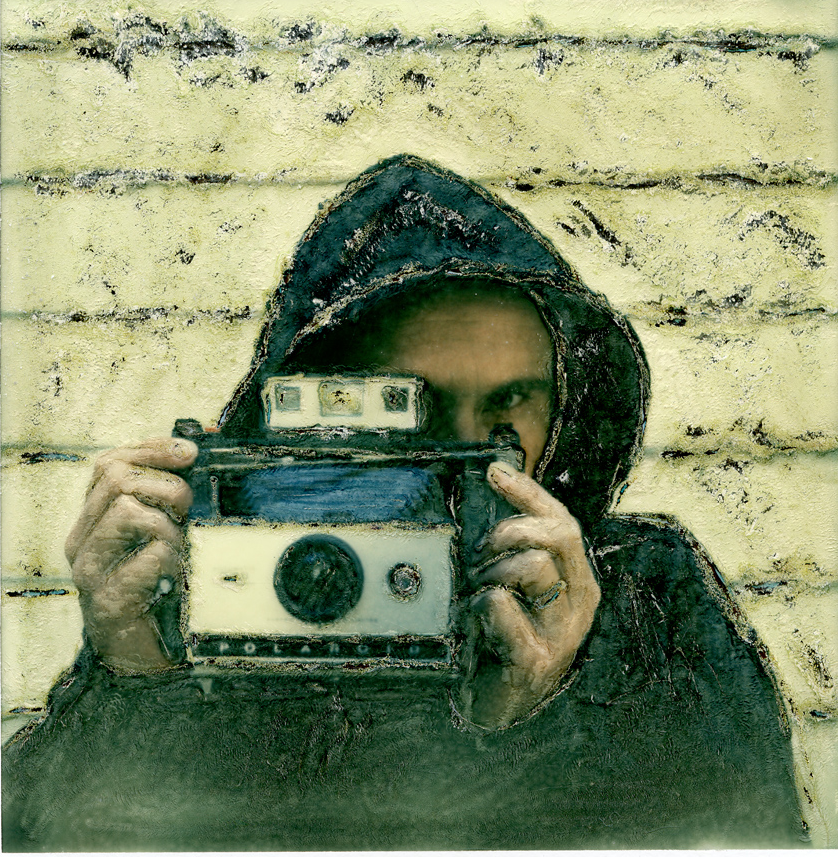
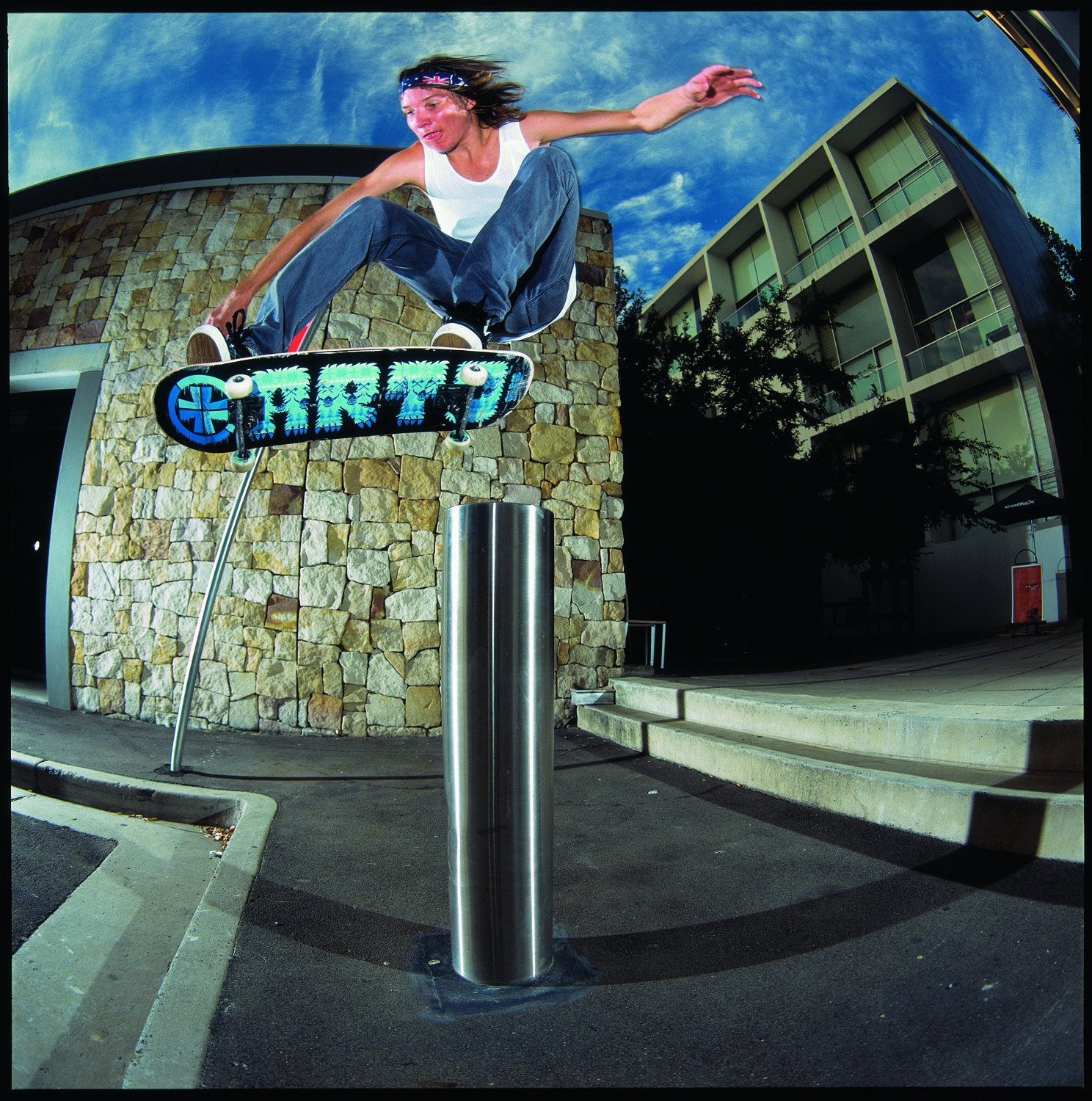
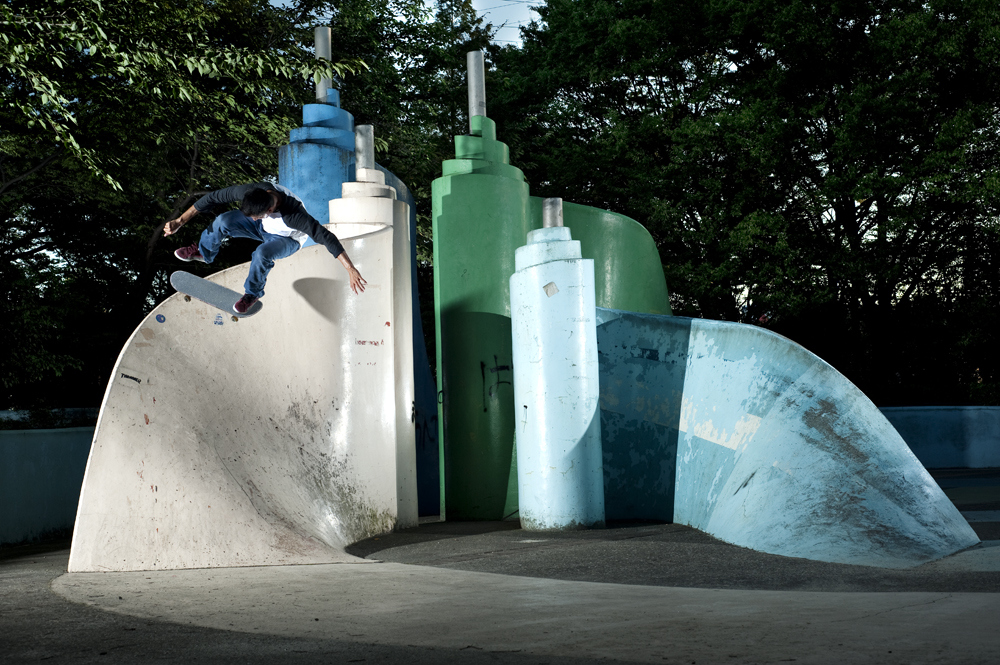
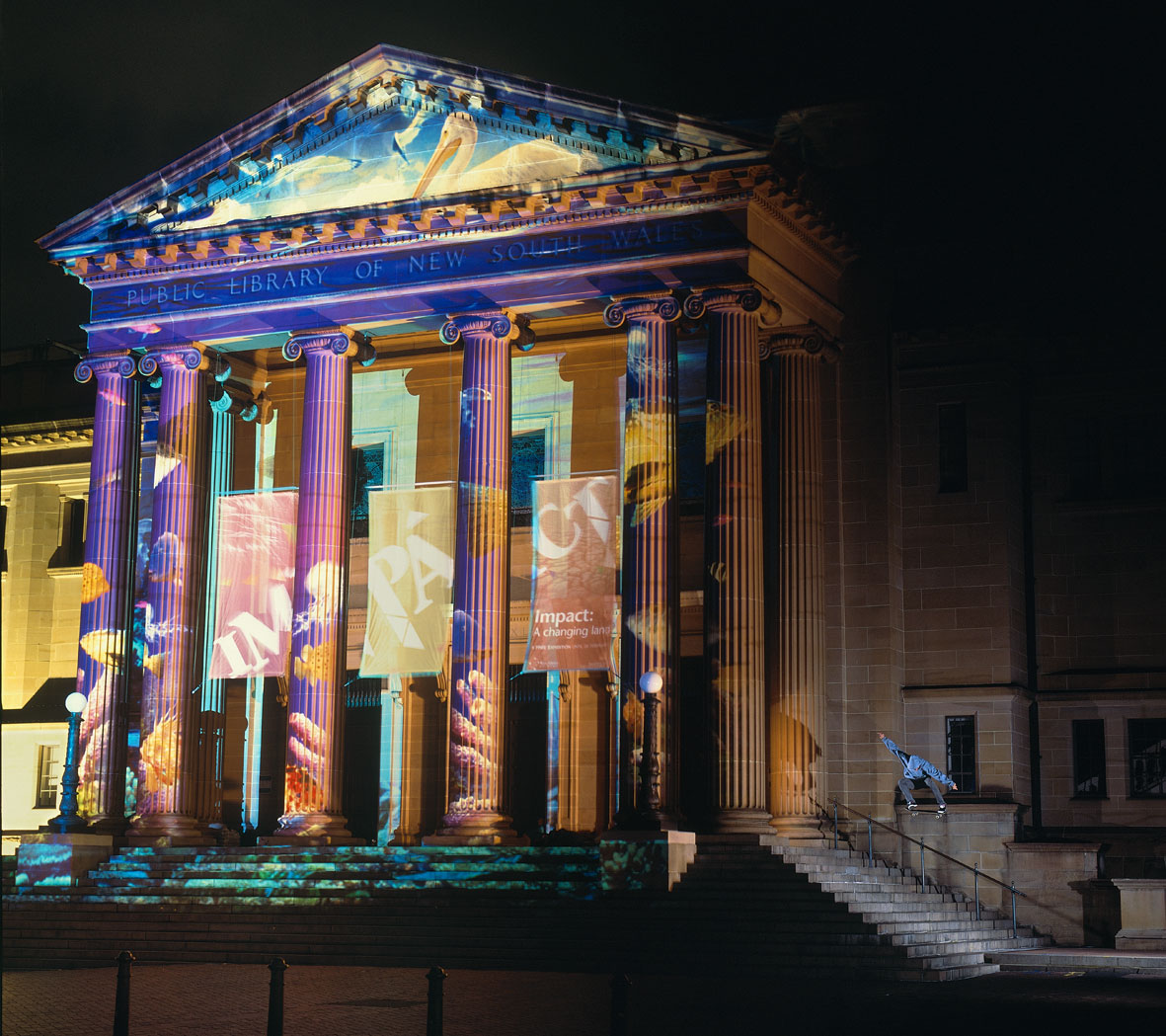

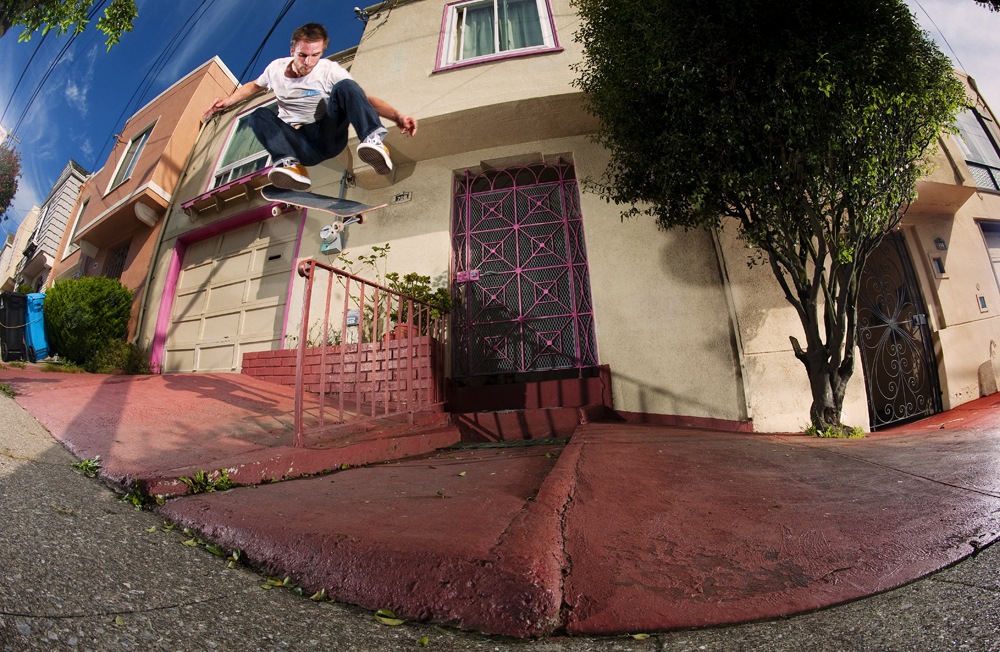
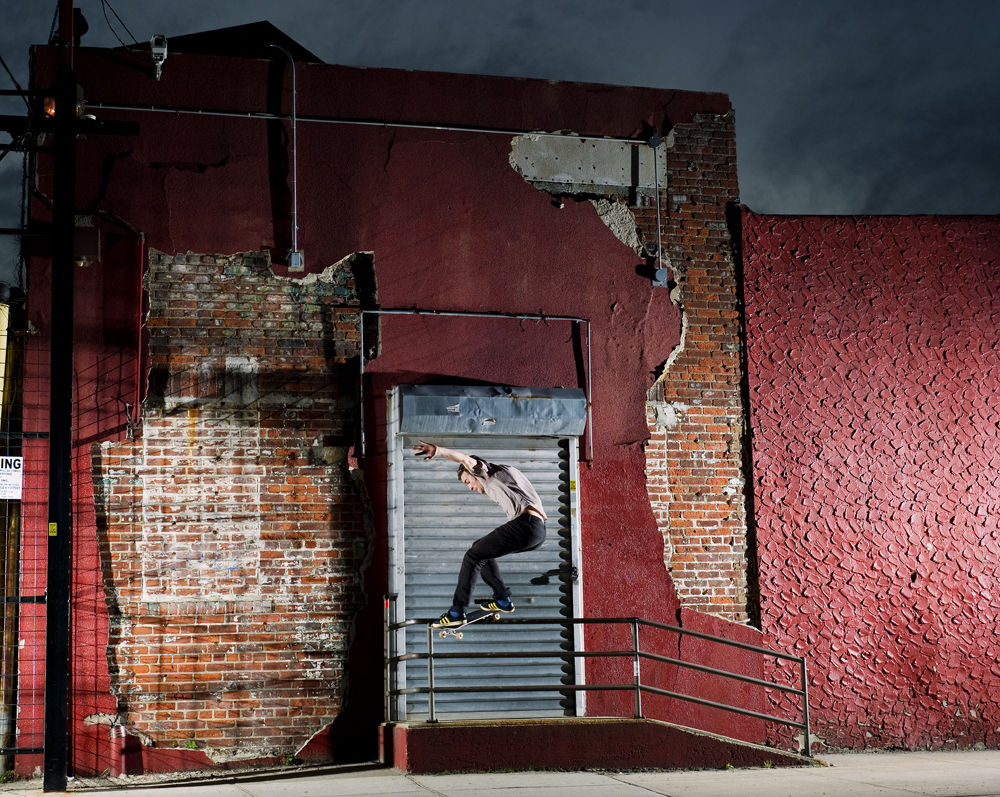
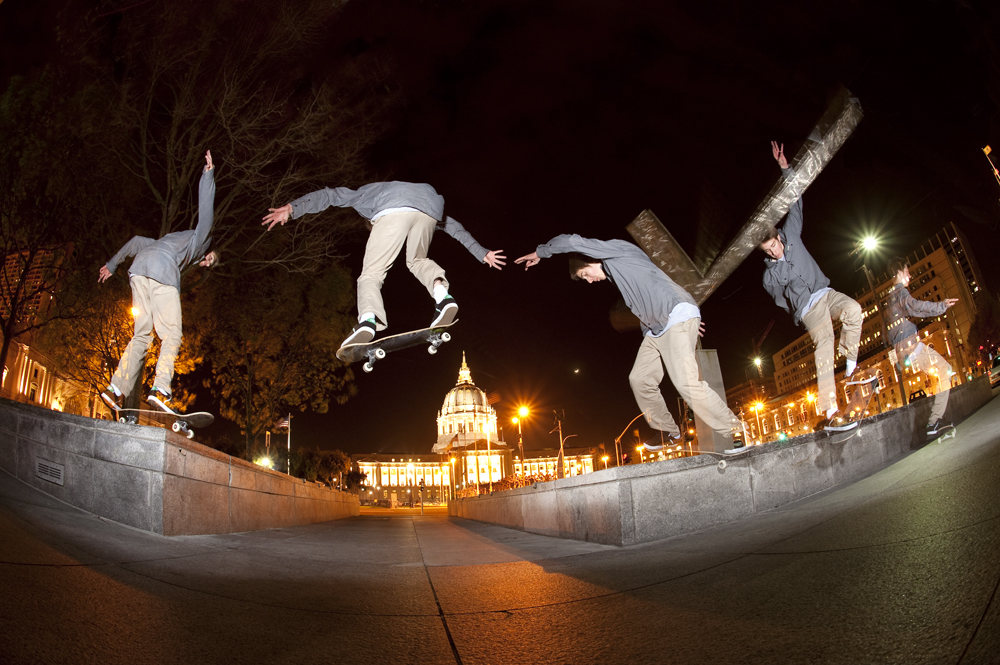
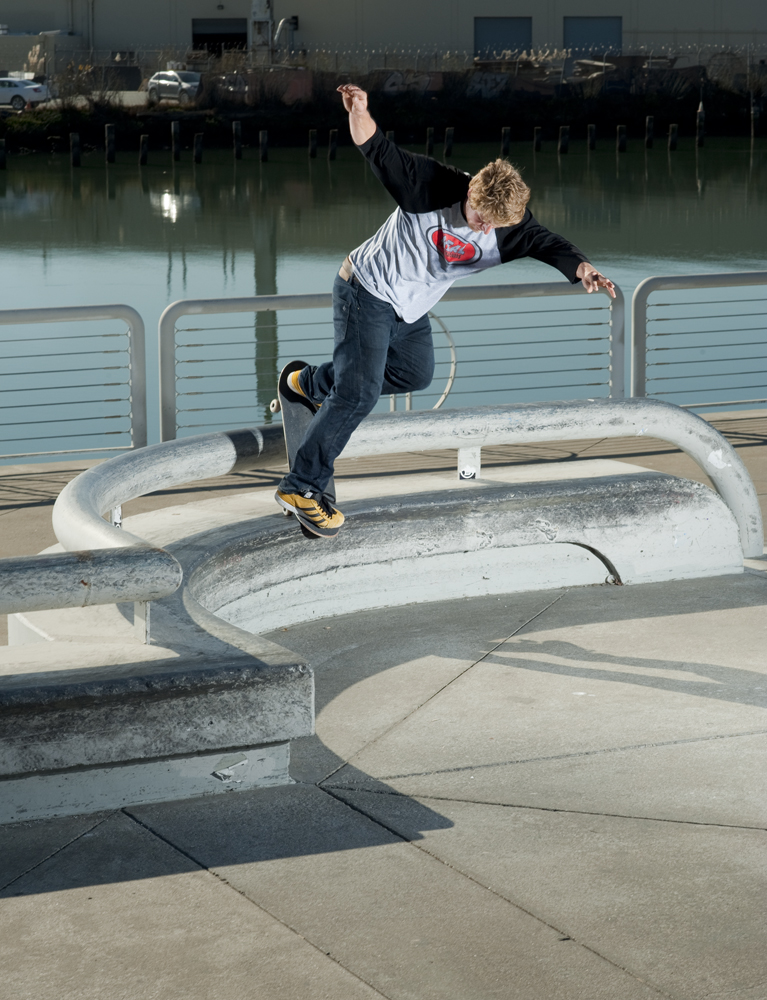
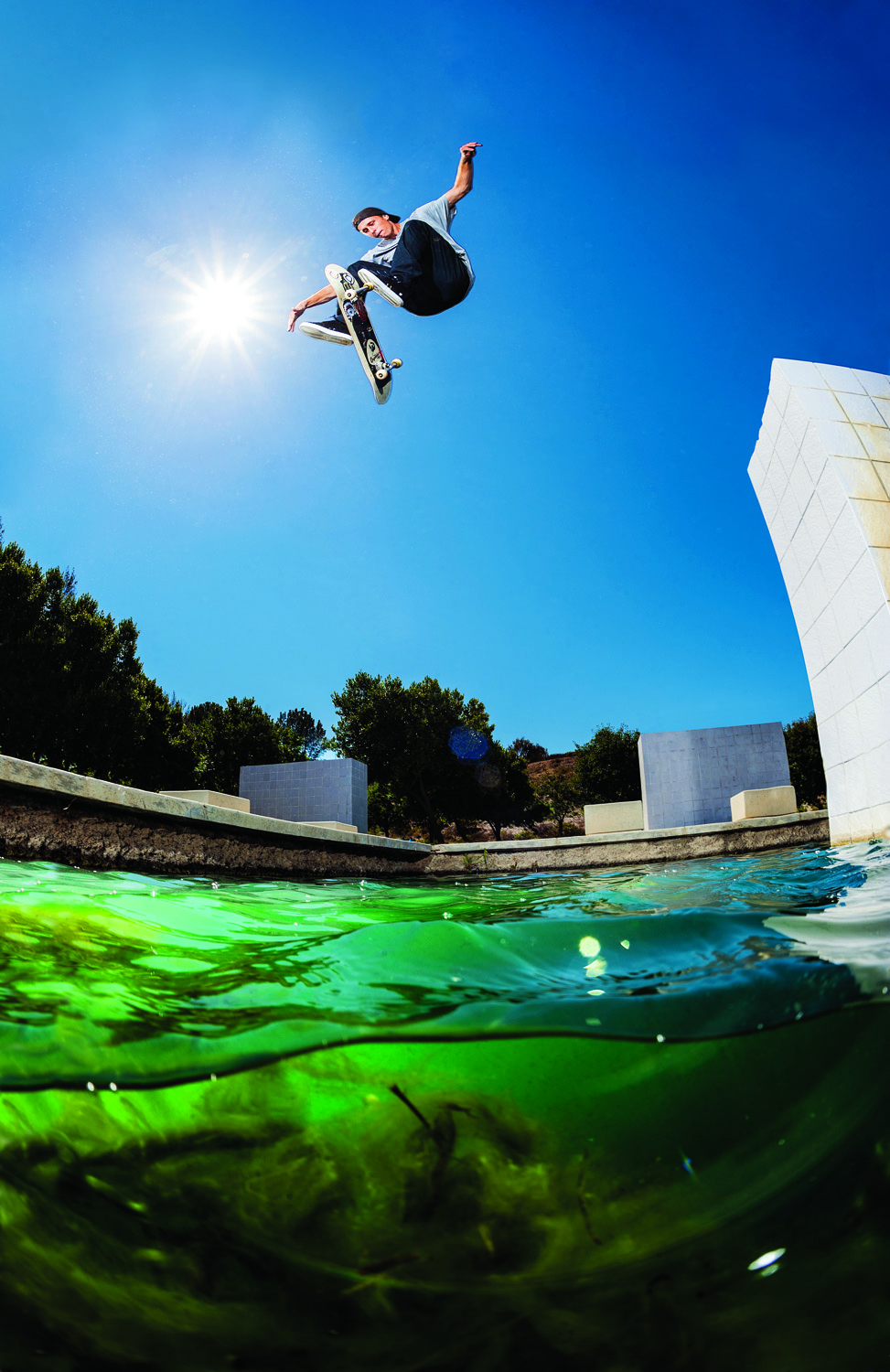

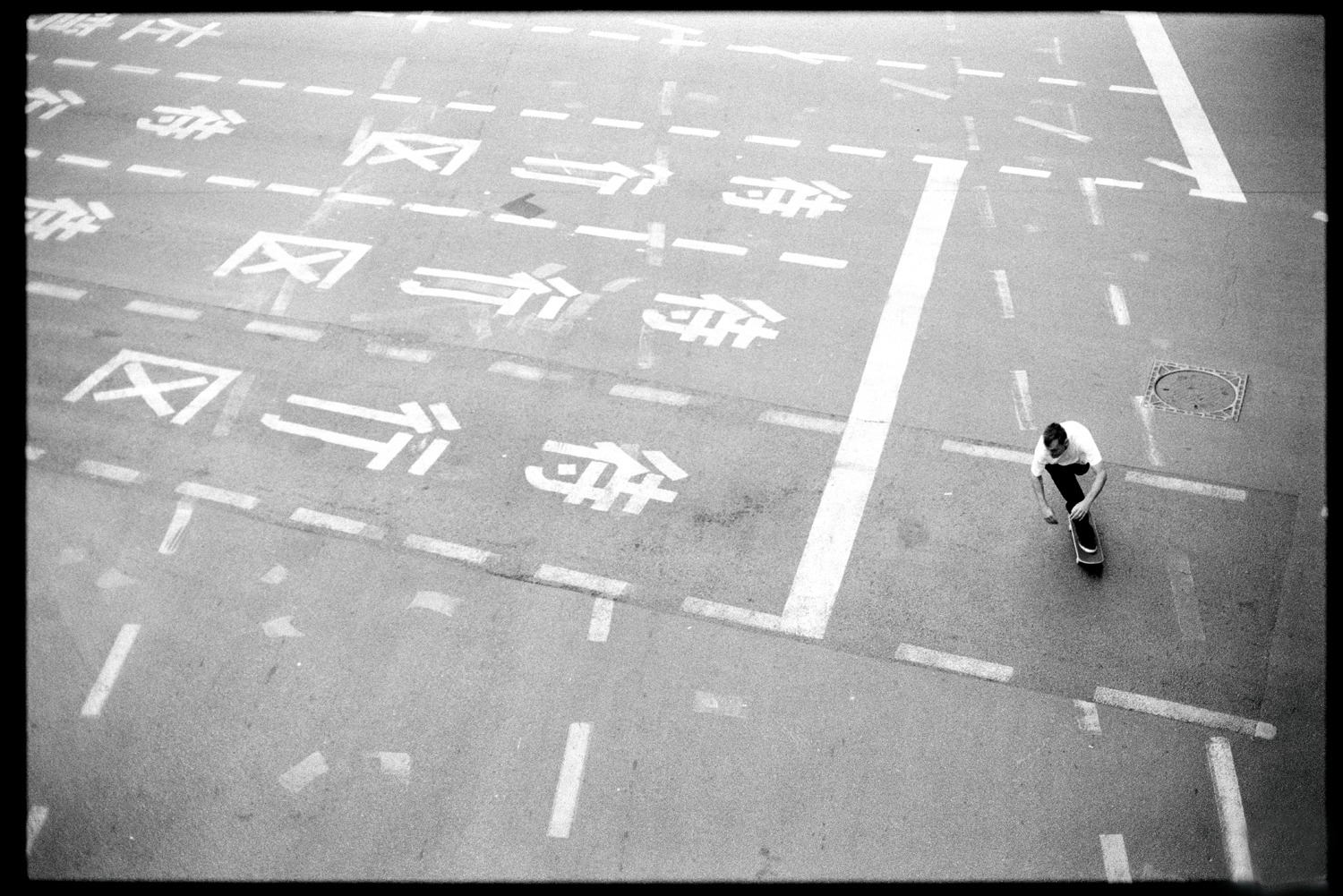
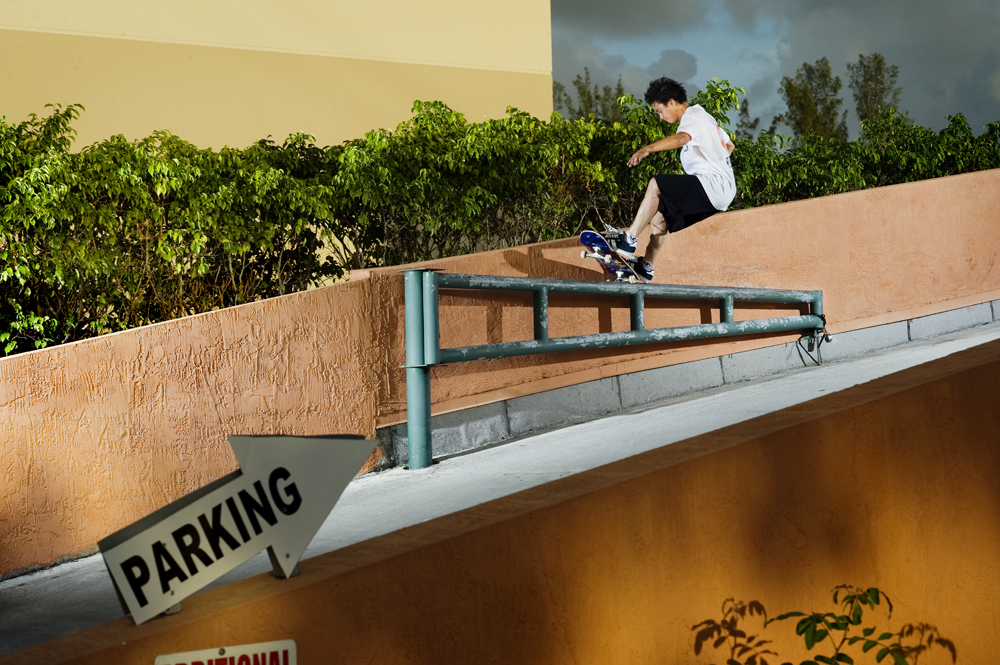






1 comment
t.a. says:
Nov 20, 2013
Where are all the comments?? I love this dudes work. Unless you’re a real nerd, you might not be able to decipher the photographer from the photo, but Chami’s work has long stood out to me. One of the things that keeps me comin’ back to TransWorld these days are his shots and a lot of the stuff he does with his lady. Back in 2007, he shot a bunch of black-and-whites and she went over them with colored pencil and such; it was too fresh and rad!
I like that he took a less traditional path to skate-photographer-dom; a lot o’ dudes do it to maintain a presence in skating when they ‘recognize their lack of talent’ to a degree, but his approach is different. Sincere.
Great interview. Good on ya, fellas.